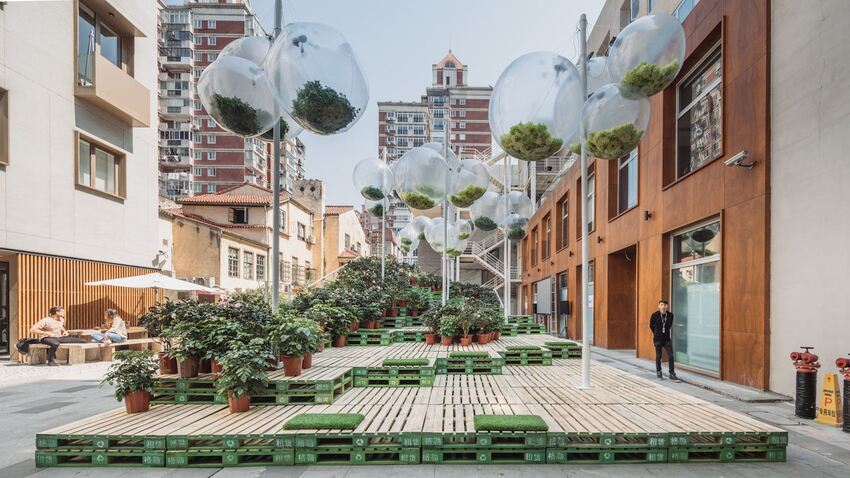Amidst the challenges of urbanization and resource depletion, a transformative trend is emerging – the conversion of abandoned spaces into vibrant, sustainable hubs through the principles of upcycling. This article explores the innovative concept of upcycled urban spaces, shedding light on how neglected areas can be revitalized to serve as eco-friendly community centers, artistic havens, and sustainable business districts.
Repurposing Industrial Relics
Abandoned industrial sites often stand as reminders of bygone eras. This section delves into how these relics can be repurposed through upcycling initiatives. By transforming old factories into co-working spaces, art studios, or sustainable production units, urban planners and entrepreneurs can breathe new life into these structures, preserving their historical essence while contributing to a more sustainable and resilient urban landscape.
Green Roofs and Vertical Gardens on Abandoned Buildings
Abandoned buildings can be eyesores in urban environments, but with the application of green infrastructure, they can become symbols of ecological revitalization. This part explores how installing green roofs and vertical gardens on abandoned structures not only enhances their visual appeal but also contributes to urban biodiversity, improves air quality, and mitigates the urban heat island effect. Upcycling these structures with sustainable features creates a harmonious blend of aesthetics and environmental benefits.
Abandoned Parking Lots to Urban Gardens
Unused parking lots, often vast expanses of impermeable surfaces, present opportunities for transformation into urban gardens. This section discusses how upcycling these spaces into community gardens or urban farms can foster local agriculture, provide green oases for residents, and contribute to food security. By reclaiming these areas for sustainable purposes, cities can mitigate the environmental impact of asphalt-dominated landscapes.
Shipping Container Repurposing
Discarded shipping containers, with their sturdy structures, are finding new life as versatile building blocks for community spaces. This part explores how repurposed shipping containers can be used to create pop-up markets, art galleries, or even temporary housing solutions. The adaptability and mobility of these containers make them ideal for fostering dynamic, ever-changing urban spaces that respond to the evolving needs of the community.
Railway Tracks to Urban Trails
Abandoned railway tracks can be transformed into vibrant urban trails, promoting eco-friendly transportation and recreational activities. This section delves into how repurposing these tracks into pedestrian and cycling paths connects neighborhoods, reduces reliance on traditional transportation, and enhances the overall well-being of urban residents. Upcycling forgotten infrastructure into accessible trails contributes to the creation of healthier and more resilient urban environments.
Empty Commercial Spaces as Incubators for Local Businesses
Vacant commercial spaces in urban areas can be repurposed into incubators for local businesses and startups. This part explores how abandoned storefronts or malls can become hubs for innovation, fostering entrepreneurship and community engagement. By providing affordable spaces for small businesses, upcycled commercial areas contribute to economic revitalization and social resilience within urban neighborhoods.
Community-Led Art Installations
Community-led art installations have the power to transform neglected spaces into cultural landmarks. This section discusses how collaborative art projects, involving local artists and residents, can breathe life into abandoned areas. From vibrant murals to interactive sculptures, these installations not only beautify urban landscapes but also instill a sense of pride and ownership among the community, fostering social resilience.

